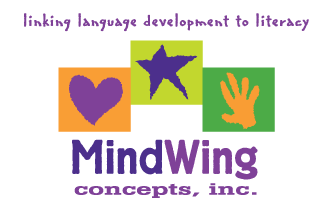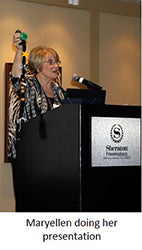Secure Checkout. FREE SHIPPING for Continental U.S. Orders over $60.
Menu
-
- Home
-
About Us
-
The Approach
-
Linking Language & Literacy
-
MindWing Learning
-
Learning Resources
-
SHOP
-
Blog
-
- About MindWing
- Our People
- Contact Us
- Your Account
- Login
-
United States (USD $)

Secure Checkout. FREE SHIPPING for Continental U.S. Orders over $60.
MindWing Concepts Blog
And to think that YOU saw it on Mulberry Street
March 02, 2015
 Maryellen Rooney Moreau with Braidy the StoryBraid® and Story Grammar Marker®, holding a copy of Dr. Seuss’ Horton Hatches the Egg! (right) Mulberry Street is a 10-minute walk from our office and it is this Mulberry Street in Springfield that inspired Dr. Seuss’ first published book And To Think That I Saw It On Mulberry Street. Today, Maryellen took a drive over (it is way too cold and snowy to walk) with Braidy® and SGM® for a Dr. Seuss photo opportunity in honor of Dr. Seuss Day. Dr. Seuss would have been 111 on March 2nd and he grew up right here in Springfield, MA...
Maryellen Rooney Moreau with Braidy the StoryBraid® and Story Grammar Marker®, holding a copy of Dr. Seuss’ Horton Hatches the Egg! (right) Mulberry Street is a 10-minute walk from our office and it is this Mulberry Street in Springfield that inspired Dr. Seuss’ first published book And To Think That I Saw It On Mulberry Street. Today, Maryellen took a drive over (it is way too cold and snowy to walk) with Braidy® and SGM® for a Dr. Seuss photo opportunity in honor of Dr. Seuss Day. Dr. Seuss would have been 111 on March 2nd and he grew up right here in Springfield, MA...
Enjoy Using the Story Grammar Marker® Materials For Traditional and Graphical Stories
February 20, 2015
Our winter theme is expanding in literature as well as in real life here in New England. From blogs containing twelve episodes of Frozen to Owl Moon to the recent Blizzards of 2015, we have chosen two versions of the same story reflecting a winter theme.

The Snow Walker
(On My Own History)
By Margaret K. Wetterer and Charles M. Wetterer (Authors)
Mary O'Keefe Young (Illustrator)
Carolrhoda Books (Lerner)
Minneapolis, MN: 1996
ISBN: 978-0876149591

The Snowshoeing Adventure of Milton Daub, Blizzard Trekker
(History's Kid Heroes)
By Margaret K. Wetterer and Charles M. Wetterer (Authors)
Emma Carlson Berne (Adapter), Zachary Trover (Illustrator)
Graphic Universe (Lerner)
Minneapolis, MN: 2010
ISBN: 978-0761361947

Owl Moon: A Winter Adventure with Narrative and Expository Text
February 03, 2015
 Snowy evenings often inspire poets, musicians and writers. One that I love is Robert Frost’s famous poem entitled Stopping by Woods on a Snowy Evening. I have a beautiful copy of this poem with illustrations by Susan Jeffers. This poem happens to be an exemplar poem listed in Appendix 2 of the Common Core State Standards. The last page of the book has a note written by the illustrator about her mother, an artist, who would take her daughter for walks on snowy evenings: “My mother’s favorite thing to do was simply to walk outside and look. She was a painter and my first painting lessons came from her. They were really lessons in looking. She would ask me: What is the color of the tree shadow? Is it blue? Blue- green” Violet? She was teaching me to paint what I saw, not what I knew. What I knew would never be enough.” Color often is a clue to the author’s, poet’s or illustrator’s theme. Robert Frost’s poem, so beautifully illustrated in this version, reminded me of Owl Moon by Jane Yolen and illustrated by John Schoenherr, due to similarities of the winter night’ setting, the owls and the mention of colors...
Snowy evenings often inspire poets, musicians and writers. One that I love is Robert Frost’s famous poem entitled Stopping by Woods on a Snowy Evening. I have a beautiful copy of this poem with illustrations by Susan Jeffers. This poem happens to be an exemplar poem listed in Appendix 2 of the Common Core State Standards. The last page of the book has a note written by the illustrator about her mother, an artist, who would take her daughter for walks on snowy evenings: “My mother’s favorite thing to do was simply to walk outside and look. She was a painter and my first painting lessons came from her. They were really lessons in looking. She would ask me: What is the color of the tree shadow? Is it blue? Blue- green” Violet? She was teaching me to paint what I saw, not what I knew. What I knew would never be enough.” Color often is a clue to the author’s, poet’s or illustrator’s theme. Robert Frost’s poem, so beautifully illustrated in this version, reminded me of Owl Moon by Jane Yolen and illustrated by John Schoenherr, due to similarities of the winter night’ setting, the owls and the mention of colors...

Disney’s FROZEN – Story Grammar Marker® Style!
January 20, 2015
It is an animated movie with not one, but TWO princesses. The Prince is a villain, the person with the magical powers is actually “good.” The act of true love that saves the day is not a kiss from a prince, but rather one sister sacrificing herself for another sister. It is a plot driven by love in a family, rather than solely by a romance (but there is just enough romance to keep us hopeful). It is the 5th highest grossing film of all time and the #1 animated film of all time. It won Academy Awards and Golden Globes. It is relatable, empowering, and filled with Kick-Offs, Feelings, Plans, Mental States, Consequences and Resolutions with very strong characters and constantly changing settings. It is Disney’s phenomenon, Frozen.
Last week, we presented Frozen in a workshop entitled Story Grammar Marker®, ThemeMaker® and Data Collection that was presented to 800 SLPs in NYC’s Board of Education. Videos of story retellings were shown using clips from Disney’s Frozen and an extensive narrative analysis was shared as well. Coincidentally, one of Advanceweb’s latest blogs (http://community.advanceweb.com/blogs/sp_2/archive/2014/12/29/using-disney-s-frozen-in-speech-therapy.aspx) focused on Frozen. So, this is perfect timing for you to receive the Story Grammar Marker® Narrative Analysis of 12 episodes (scenes) from Frozen. Click here for the FREE download!
When you look at the narrative analysis, please pay particular attention to the elements of the Critical Thinking Triangle®: kick-offs, feelings, plans and mental states that are so integral to this story. Different episodes are taken from perspectives of different characters. Notice how we have fleshed out the Mental States to help children think about the motivations of characters – what do they believe, realize, remember, think and know. Frozen is rich with mental states – and it is there that this story holds it’s magic. What does Elsa realize about her powers? What does Anna think about Elsa shutting her out? What does Kristoff believe about Anna’s feelings for Hans? What does Hans understand about the sisters’ relationship? What does Elsa remember about her childhood – and how does that motivate her plans throughout the whole story? What does Anna realize and believe that helps her make the decision to save Elsa?
This exciting and engaging story (that is quite familiar to most of us) makes it easy to see how to elaborate and expand the elements of the Critical Thinking Triangle®. Our hope is that you will use this analysis in your therapy or classroom, but also use it as a model for analyzing other movies, stories, books or novels.

Maryellen Moreau Recipient of the 2014 Alice H. Garside Award by the International Dyslexia Association, Massachusetts Branch
January 02, 2015
 Maryellen Rooney Moreau, MEd, CCC-SLP, founder and President of MindWing Concepts, Inc. received the 2014 Alice H. Garside Lifetime Achievement Award from the International Dyslexia Association, Massachusetts Branch (MABIDA) for “exemplary leadership, service or achievement in a field that directly or indirectly furthers the mission of MABIDA.” MABIDA’s mission, in part, ´promotes, encourages and supports the preparation and continued education of professionals and other personnel to ameliorate the impact of dyslexia and related disorders and to promote optimal methods of reading instruction for all children.” Maryellen’s work certainly fits this criteria.
Maryellen Rooney Moreau, MEd, CCC-SLP, founder and President of MindWing Concepts, Inc. received the 2014 Alice H. Garside Lifetime Achievement Award from the International Dyslexia Association, Massachusetts Branch (MABIDA) for “exemplary leadership, service or achievement in a field that directly or indirectly furthers the mission of MABIDA.” MABIDA’s mission, in part, ´promotes, encourages and supports the preparation and continued education of professionals and other personnel to ameliorate the impact of dyslexia and related disorders and to promote optimal methods of reading instruction for all children.” Maryellen’s work certainly fits this criteria.
Narrative is “Having a Moment” in Research Circles
July 28, 2014
Narrative seems to be “having a moment” in research circles, with a number of recent articles being published related to the why and how of developing storytelling skills. One of the most exciting pieces is “Classroom-Based Narrative and Vocabulary Instruction: Results of an Early-Stage, Nonrandomized Comparison Study,” (Gillam, Olszewski, Fargo & Gillam, 2014) detailing a study primarily conducted by Utah State University and published in Language, Speech and Hearing Services in Schools (and available to ASHA members in full text here).
This study com-pared the results of narrative and vocabulary instruction via a traditional versus an experimental approach in two first grade classrooms...
